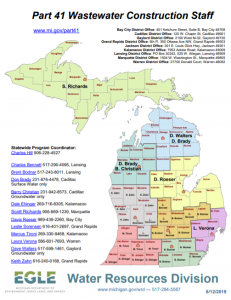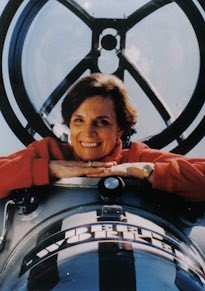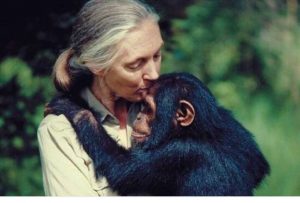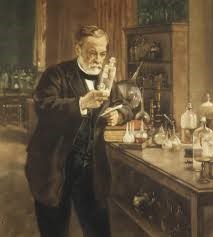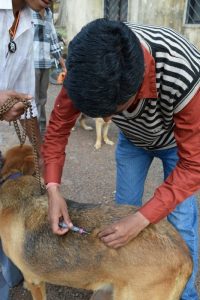Norman Heatley was a British biochemist born in Woodbridge, Suffolk, England. In his early years, Heatley enjoyed sailing on the River Deben. In his obituary, Eric Sidebottom paints him as the, “quintessential family man – a proud and immensely involved father, an affectionate husband, an accomplished house husband, an excellent host.” He attended Tonbridge School, where his Chemistry teacher sparked his interest in Biochemistry (Evans). Heatley went on to earn his degree in Natural Sciences at St John’s College, Cambridge, in 1933, but he didn’t stop there. In 1936, Ruth Evans explains, “Norman Heatley earned his PhD, and was invited to join a team of scientists in Oxford working under the dynamic Australian pathologist Howard Florey.”
Heatley’s new team of scientists set out to study Sir Alexander’s discovery of Penicillin. Today, Penicillin is a common antibiotic used to treat bacterial infections, but discovering how to harness the drug was a challenge. Before joining the team of scientists, Heatley had a history as an inventor. His creative mind was crucial to the team, because Penicillin is extremely unstable and hard to make. Heatley had to find a way to not only grow enough Penicillin to study, but also separate it from the fungus it grows in and measure it (Lienhard). Heatley accomplished this by devising a new assay that, “measured the activity of Penicillin, established appropriate conditions under which Penicillin was stable, and pioneered a multi-stage technique to isolate from the culture fluid and concentrate it.” (Sir William School of Pathology). The strains of Penicillin were tested on mice to see their effectiveness. Robert Gaynes explains, “On May 25, 1939, the group injected 8 mice with a virulent strain of Streptococcus and then injected 4 of them with Penicillin; the other 4 mice were kept as untreated controls. Early the next morning, all control mice were dead; all treated mice were alive. Chain called the results ‘a miracle.’” This success was a huge stepping stone towards turning the Penicillin fungus into a life-saving antibiotic. The next trial was on a policeman who had a serious infection, including abscesses throughout his body, and his condition improved dramatically within 24 hours.
Eventually, the United States took over the production of Penicillin. Andrew Florey and Heatley travelled to the United States with their strain of Penicillin in 1941. There, they met with Charles Tom, the principal mycologist of the US Department of Agriculture, and Andrew Jackson Moyer, director of the department’s Northern Research Laboratory (Gaynes). The United States found a way to produce more Penicillin than the original research team ever had. The new technique developed for producing Penicillin by the United States was “deep-tank fermentation.” Gaynes explains deep-tank fermentation as, “This process adapted a fermentation process performed in swallow dishes to deep tanks by bubbling air through the tank while agitating it with an electric stirrer to aerate and stimulate the growth of tremendous quantities of the mold.”
The new growing and separating techniques to obtain medical Penicillin were notable during World War II. Penicillin is said to have reduced the number of deaths and amputations during WW2. Records say that there were only 400 million units of Penicillin during the first five months of 1943, but by the end of WW2, U.S companies were making 650 billion units a month (Kalvaitis). This output completely changed the world of medicine; previously fatal infections could now easily be treated.
Penicillin was officially announced as an antibiotic in 1940. In 1945, the leaders of the team, Fleming and Florey, got their Nobel Prize in medicine for their work – thanks to Heatley’s imaginative designs. In 2004, Heatley published “Penicillin and Luck: good Fortune in the Development of the Miracle Drug.”
Even though Heatley was one of the main hands in Penicillin’s discovery that lead to its use as an antibiotic, he did not receive the Nobel Prize. He also denotes Penicillin’s discovery to luck in his book. Heatley’s humble attitude towards his own work is something that I can relate to. Heatley’s main goal was not to obtain the glory for developing Penicillin – it was to bring it to people to help them and use his interests and talents tohelp them.
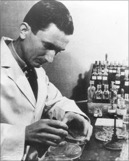
The Editors of Encyclopaedia Britannica. “Norman George Heatley.” Encyclopædia Britannica, Encyclopædia Britannica, Inc., 26 Sept. 2019, www.britannica.com/biography/Norman-George-Heatley.
Works Cited
Endocrine Today, August 2008. “Penicillin: An Accidental Discovery Changed the Course of Medicine.” Healio, Aug. 2008, www.healio.com/endocrinology/news/print/endocrine-today/%7B15afd2a1-2084-4ca6-a4e6-7185f5c4cfb0%7D/penicillin-an-accidental-discovery-changed-the-course-of-medicine.
Evans, Ruth. “Obituary: Norman Heatley.” The Guardian, Guardian News and Media, 8 Jan. 2004, www.theguardian.com/news/2004/jan/08/guardianobituaries.highereducation.
Gaynes, Robert. “The Discovery of Penicillin.” Emerging Infectious Diseases, Centers for Disease Control and Prevention, May 2017, www.ncbi.nlm.nih.gov/pmc/articles/PMC5403050/.
Lienhard, John H. Engines of Our Ingenuity, www.uh.edu/engines/epi601.htm.
“Norman Heatley (1911-2004).” BBC Oxford, BBC, 20 July 2010, news.bbc.co.uk/local/oxford/hi/people_and_places/history/newsid_8828000/8828836.stm.
Sidebottom, Eric. “Norman HEATLEY (1911–2004).” Norman Heatley: Oxfordshire Blue Plaques Scheme, www.oxfordshireblueplaques.org.uk/plaques/heatley.html.
“The Norman Heatley Lecture.” Sir William Dunn School of Pathology, University of Oxford, www.path.ox.ac.uk/content/norman-heatley-lecture.
